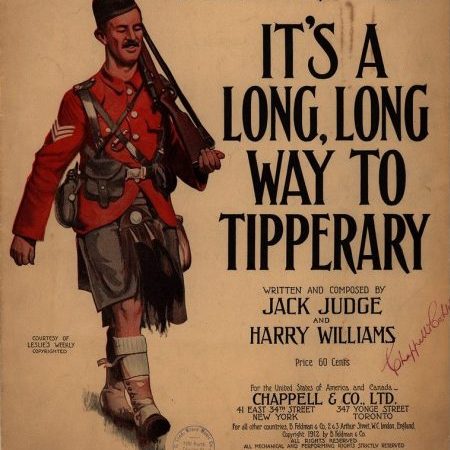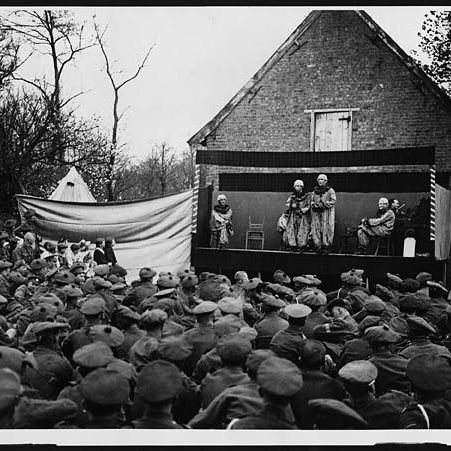- News
- And the Band Plays On
And the Band Plays On
As the world experiences these historic times, separately but collectively, we have all been looking to artists and entertainers to sustain us, and uplift us. Whether tuning in to concerts broadcast from small New York apartments, sing-alongs on Italian balconies, or one of those intricately edited Zoom recordings, at least one thing is clear – the arts are fundamental. The delivery may have changed, but the music remains.
Art helps us celebrate the best times and survive the worst. This is nothing new. We interpret art as we need to – assigning cathartic or hopeful meaning to a specific tapestry of frequencies; and we create art as we need to – expressing ourselves, sorting through emotions, or simply creating for creation’s sake in the face of tragedy. Music, in particular, has always been more than entertainment, and has always been something we turn to when words fail.
Long before the music industry as we know it came into being, popular songs were often purchased in the form of piano sheet music for any household with a piano to play and sing. After WWI broke out, the music played in these homes spoke to the kind of hope everyone craved – encouragement to “Keep the Home Fires Burning” until the war’s end. Sheet music was also appreciated at army camps, where American vaudeville entertainers famously set out to boost troops’ morale. Even in proximity to the unimaginable realities of war, soldiers sang songs, wrote music, and performed plays. Both at home and in the trenches, art was a necessary balm for the unprecedented times.


In the bleakest circumstances, those persecuted by Nazi Germany turned to music even at great personal risk. Anecdotes of a piano smuggled into a Jewish ghetto and instruments hidden in sewers by day show music as both a consolation and a protest. From cabaret to opera to jazz, musicians of any level continued to create and share songs, reinforcing their humanity and continued perseverance.
“Music was forbidden there, but the prisoners managed to smuggle in a piano. How? They dismantled it, carried it piece by piece, and then assembled it again. When you think about it, they could have smuggled in medicine or food but chose a musical instrument instead. That shows how important music was."
Amit Weiner for DW, 2018
On the other hand, our hardest times are often far more localized and personal. Even when life appears normal from a bird’s eye view, individuals may turn to creation and consumption of music for any number of reasons. There are songs that transport us away from a bad situation, remind us of better times, or motivate us to reach for the future. The arts are so tied to mental health that music therapy is used as a treatment for a number of mental disorders and visual art therapy can aid in managing stress and processing trauma.
Music can connect people to their heritage or even contribute to language revitalization by blending cultural elements with a contemporary idiom. From Mari Boine to Tanya Tagaq, Indigenous artists from all over the world use music to celebrate identity and bring visibility to ongoing challenges.


Through creation, the arts give us a sense of control and a safe outlet for expression. Through consumption, they can build community and serve as an effective tool for rehabilitation. From state-sponsored painting workshops in correctional facilities, to the trio of world-class musicians brought together for the first time to perform at a Kingston prison, art is beneficial and, not surprisingly, desirable in every facet of life.
That the John Adam’s orchestral piece “On the Transmigration of Souls” was written in response to the same events of September 11, 2001 that prompted Bruce Springsteen’s “The Rising” demonstrates the vast worlds of music that can converge on one collective experience. With each musical response to tragedy, the artist funnels expression into a subjective medium for an audience to impose their own meaning and take from each song what they need at that moment. Is this process disjunct or does it perhaps display an exceptionally unified response to collective distress?
Once again in today’s era of distanced and heroic patience, our reliance on the arts connects us. How fortunate that we now live in a world where the arts are so instantly accessible to support us through such times. We smile at the news of singers serenading seniors’ home residents from the sidewalk or concerts performed from cars. We mourn with members of the MET Orchestra as they live-stream Handel in tribute to a violist lost to the virus. Through despair and loneliness, we continue to unite and stay connected through the arts, participating virtually as we wait for the day we can experience them together again.
About the author:
Taryn Plater is in her fourth year working as Marketing & Communications Assistant at the Chan Centre as part of the UBC Work Learn program. She is pursuing a double major in music and linguistics at UBC, as well as a Master of Management, and looks forward to playing a role in the future of the performing arts in Canada.
